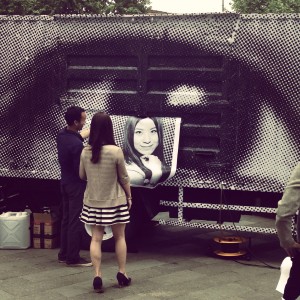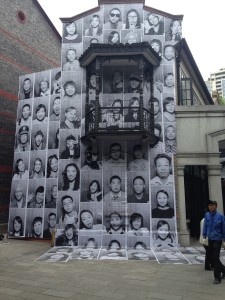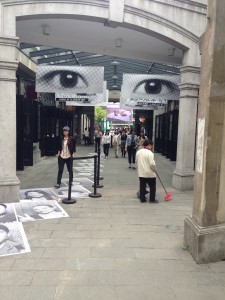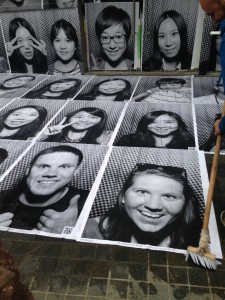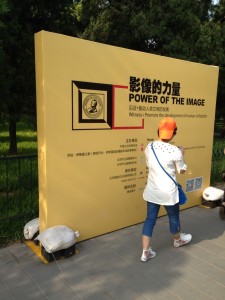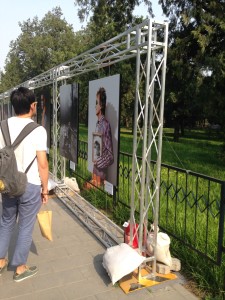Urban Art
Last May I was fortunate to have traveled to Shanghai, China with my family. As we explored the quickly growing city on one of the touristy “Hop-on, Hop-off” busses, one particular stop grabbed my attention: Xintiandi. This is a posh car-free section of the city that is filled with high-end restaurants, shops, and other entertainment. In Xiantiandi I felt as if I was in any of the major cities of the world.
Luck was on my side during this day. My sisters pointed out a truck printing large portrait images of anyone who wanted one, and for free!
I was intrigued, but I continued on with my family in search of a lunch spot. Minutes later, we stumbled upon more portraits that were pasted on a number of buildings from previous days.
The artist and TED Prize winner “JR” had been doing his “Inside Out” project in Shanghai. It was an art experience unlike anything I’ve ever seen. Art in public, in your face, and it was classy. It was designed to reach people who don’t seek out art from galleries and museums.
There is tremendous value in institutions such as The Met, The Louvre, The Hermitage, etc but for the most part they are one directional. The experience I had in Shanghai allowed every day people to participate, including myself, and this extra dimension is what pushes the boundary to make Inside Out so special.
Urban art continued to make appearances as we continued on our trip throughout China:
This is a pop-up photo gallery named “Power of the Image” outside The Temple of Heaven, Beijing, China. According to Kodak’s website:
The award-winning images in the Power of the Image reinforce world peace, the advancement of human civilization, the protection of our environment, and uniquely highlight photography as a way of expression.
The Temple of Heaven is one of the places on earth I would least expect a photo gallery of this variety to appear. This exhibit succeeded in changing the scenery outside a major Beijing landmark. It was also refreshing to see this despite knowing that I was exploring a country with some of the most oppressive laws, terrible pollution, and little freedom of expression. Or perhaps it was propaganda? I’ll let you decide.
Perhaps the most recognized form of urban art is known as “graffiti”, and the most broadly known artist is “Banksy”. But there’s even more examples of art and artists who aren’t permanently defacing public property! Here are some examples of urban artists and movements that I’ve enjoyed learning about recently:
- http://insideoutwake.com
- http://visitsteve.com
- http://beforeidie.cc
- http://spy-urbanart.com
- http://www.klughaus.net/seb-gorey-graffiti-artist.htm
_
Now what is the purpose of urban art? I think each artist is driven by their own personal mission but they hold one common belief: Art changes perceptions.
To quote JR, “What we see changes who we are.” and further:
In some ways, art can change the world. Art is not supposed to change the world, to change practical things, but to change perceptions. Art can change the way we see the world. Art can create an analogy. Actually the fact that art cannot change things makes it a neutral place for exchanges and discussions, and then enables you to change the world.
I think attempting to change perceptions (with positive intentions) is a noble cause in itself. But urban street art completes the picture for me because it’s accessible. Every day people experience and are exposed to art by simply living their life as normal. And sometimes they can even participate in the cause. To me that’s flipping the idea of art inside out.
